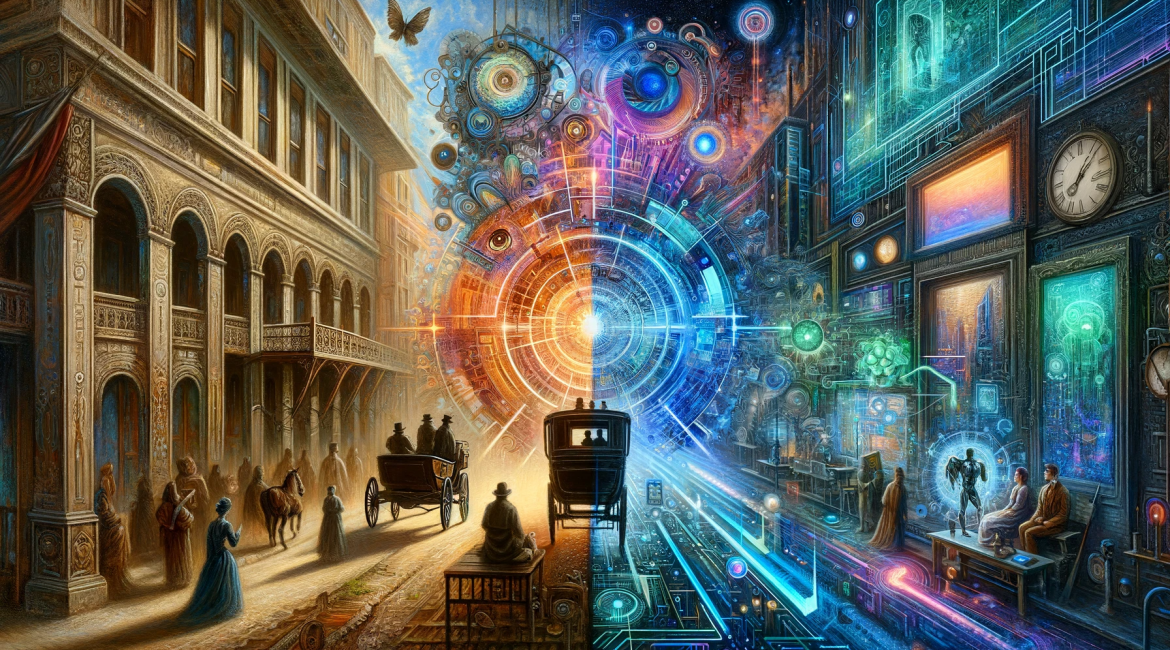In the annals of human history, few things have reshaped our world as profoundly as technological advancements. From the smog-filled factories of the Industrial Revolution to the digital landscapes created by the Internet, each wave of innovation has brought both upheaval and progress. Today, we stand at the precipice of another monumental shift, poised to be defined by Artificial Intelligence (AI) and automation. But what can history teach us about this future? How long might this transformation take, and what could it look like?
The Echoes of Past Revolutions
To understand our future, we first look to our past. The Industrial Revolution, which began in the late 18th century, fundamentally altered the fabric of society over a century. It uprooted agrarian lifestyles, gave birth to urban centers, and redefined social classes. Fast forward to the late 20th century, the internet started as a nascent network and evolved into a global phenomenon within 30 years, reshaping communication, commerce, and culture.
These historical trends suggest a pattern: rapid technological innovation followed by gradual societal adaptation, eventually culminating in profound, widespread change.
The AI and Automation Era: A Three-Phase Transformation
Phase 1: Initial Disruption (Next 10-20 Years)
As AI and automation technologies advance, we’re likely to witness significant job displacement across various sectors. This period will be marked by swift technological progress but accompanied by economic and social challenges. The response to these changes will shape the early landscape of our AI-integrated future.
Phase 2: Societal Adaptation (20-40 Years)
Following the initial shockwave, society will begin to acclimate to its new technological companions. This period will see the slow recalibration of work, life, and social norms, influenced heavily by the evolving capabilities of AI. During this time, policies like Universal Basic Income might emerge as stabilizing forces, mitigating the economic impacts of automation.
Phase 3: Full Societal Transformation (40-60 Years)
The final phase of this transformative journey will be a period of harmony and integration. AI and automation will no longer be seen as disruptors but as integral parts of daily life, work, and play. This era will be characterized by a reimagined understanding of productivity, creativity, and human fulfillment.
Conclusion: Embracing Change and Uncertainty
Predicting the future is always fraught with uncertainty, but history provides us with a guide – a map of what might lie ahead. The journey through the AI and automation era won’t be without its challenges, but like the generations before us who navigated the tumult of their times, we too have the opportunity to shape this new world.
As we embark on this journey, our greatest strength will be our ability to adapt, learn, and grow alongside the technologies we create. The future is ours to define, and the path we carve through the AI revolution will be a testament to our resilience and ingenuity as a species.
This article presents speculative insights based on historical analysis. The predictions and scenarios outlined here are extrapolations from past technological and societal transformations, such as the Industrial Revolution and the advent of the internet. It is important to note that future events, especially concerning rapidly evolving fields like artificial intelligence and automation, are inherently uncertain and subject to a multitude of influencing factors. Therefore, while this article aims to offer an informed perspective on potential future developments, it should be read as a contemplative exploration rather than a definitive forecast of what will happen.




